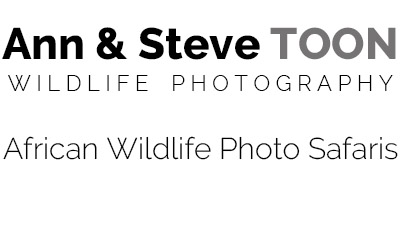As restrictions on travel to Africa ease, here are five tips to improve your wildlife photography on safari…

Get closer
Not rocket science, just a long-standing adage that states if your images aren’t working get a bit closer, and then get closer still. Certainly, if you want to showcase highly-charged animal action there’s no surer way to illustrate you were within spitting distance of it – literally – than by going large in your shots. Get as close as you can (always being ethical and not stressing subjects) and aim for tight, powerful compositions in which the energy of the moment, or the dynamism of your subject explodes from the frame. This works for animal and bird portraits too, where an extreme crop when framing can often make your character study way more arresting. Use a wide angle, whenever you can get super close, to maximise the immediacy and impact of the situation. Your wide shots will have a much more dramatic punch to them than those flattened, foreshortened, narrow fields of view you get with a longer lens.
Go lower
A low angle is the holy grail on safari. When you’re using a long lens a low angle not only gives your pictures a natural, intimate feel it also allows you to isolate subjects nicely from their surroundings. Backgrounds drop off beautifully, particularly where you select a shallow depth of field. If you switch to using a wide-angle lens, low viewpoints allow you to include lots of background for context and result in subjects close to you having a powerful 3D quality. Where you’re mainly confined to game-viewing vehicles it’s tough to get low angles because you’re a little bit high. Make a beeline for locations where a low viewpoint is a premium. Thankfully the number of low-level hides on safari is increasing, as are adapted photo vehicles and even boats that permit a lower shooting angle. There are also a few reserves that allow you to get out of the vehicle on occasion to photograph from ground level or lying prone. Always aim to photograph wildlife subjects on safari at eye-level or below if you can, for maximum viewer appeal.

Push the light
Good light is essential for good wildlife pictures. Great wildlife images come when the lighting’s more interesting. Don’t be content just photographing at the conventional golden hours that usually bookend your day on a safari. Aim to be out before sunrise and after sunset for those twilight times when the low light can lead to more evocative results. The margins of light are often where the most magical images on safari can be found. It’s also when exciting predators are active. Utilise the high ISO capabilities you’ve invested in and aim to be out photographing as late/early as possible to exploit the potential for backlighting, blue hour pictures and even spotlighting (carried out judiciously by practised guides). These days photographing on safari can even be extended right through the night in some locations; a memorable experience with potential for stunning nocturnal shots of thrilling big game.
Make yourself invisible
Specialist hides have been one of the most exciting developments on safari in recent years, but what the brochures and blurb extolling their photographic virtues often fail to point out is arguably their most important feature; the basic ability of a blind to make you disappear. The opportunity to capture subjects behaving naturally without your presence impacting on them – including very sensitive and shy species – is vitally important if you’re looking for images from your safari that go above and beyond the stock in trade. It can sometimes be tough to nail behaviour and interaction on game drives because you risk putting subjects to flight. And unless you’re in a reserve where you can track subjects off-road and stay with them as a situation develops there’s a chance everything simply moves off into the bush. In hides subjects come to you since most are constructed at waterpoints. Before booking, check how close animals/birds will come, what times of day are right for the best light, what support you’ll have for lenses, which species routinely visit and, most importantly, that you’ll have that all-important low angle of viewpoint.

Get creative
Everyone has a few classic shots in mind that they hope to get when they go on safari, but if you confine your photography solely to your wish list, and the sort of ‘me too’ pictures already out there, you won’t set the world on fire with your results. We’re not advocating you try something new if it means you might stuff up a once-in-a lifetime opportunity, but once you’ve banked a few shots you’re pleased with, have ago at something more creative, rather than simply keep repeating yourself. Try different viewpoints, framing things differently and have a go experimenting with new techniques you’ve never tried or need to practise. It’s always worth working a good subject further – you might just come away with a prize-winner. A good photo guide will give you guidance and suggestions on taking things to the next level if you’re unsure where to start.


Main pic: Bull elephant photographed from a specialist photo boat, Chobe River, Botswana









Leave a Comment